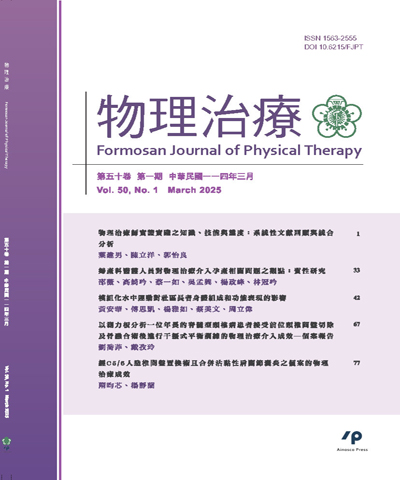
物理治療/Formosan Journal of Physical Therapy
社團法人臺灣物理治療學會 & Ainosco Press,正常發行
選擇卷期
- 期刊
Background and Purpose:Despite widespread use of a stander as part of a comprehensive intervention for children with cerebral palsy (CP), the amount of weight distributed through the lower limbs could be different due to product design. Previous study suggested that the difference between two standers was as much as 29% body weight. A custom-made powered mobile stander has been designed with intention to promote mobility in upright standing. The purpose of this case report was to describe the amount of weight bearing (WB) of a child with CP on this power mobile stander. Case Descriptions: The participant was a 5-year-old girl with spastic diplegia CP, classified by Gross Motor Function Classification System (GMFCS) as level IV, following multiple level surgery. In addition, a typically developing girl was recruited for comparison. While, the child drove the custom-made powered mobile stander, the amounts of WB were collected in the following conditions: straight forward (2 m), turn right (4.8 m), and turn left (4.8 m). The amounts of WB were quantified by two force-plates (middle capacity C2G1-A, MinebeaMitsumi Inc., Tokyo, Japan) which were installed under the foot. Outcomes: The child with CP demonstrated with a mean of 83%, 90%, and 89% sum of body weight for straight driving, right turn and left turn respectively. For the healthy control (HC) child, she demonstrated higher averaged sum of WB as expected. In addition, she demonstrated higher mean of difference of BW between two legs for straight forward (1% vs. 22% for CP vs. HC). No adverse effect was noted during test for both children. Discussion: According to the result of this pilot test, with support, child with CP may be able to bear weight more than 83% sum of BW with external supports while driving this custom-made powered stander. Clinical Relevance: The powered mobile stander combined with external supports may be useful for promoting WB for children with CP. Further research is warranted for determining safety and effectiveness of this stander.

